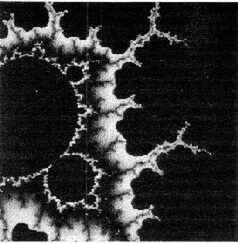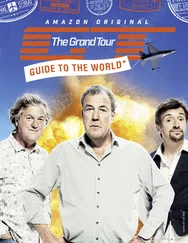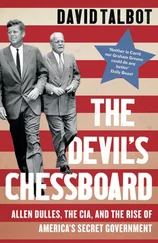Unfortunately, to date, efforts to spell out a new central and worldwide objective for the United States, in the wake of the termination of the Cold War, have been one-dimensional. They have failed to link the need to improve the human condition with the imperative of preserving the centrality of American power in world affairs. Several such recent attempts can be identified. During the first two years of the Clinton administration, the advocacy of “assertive multilateralism” did not sufficiently take into account the basic realities of contemporary power. Later on, the alternative emphasis on the notion that America should focus on global “democratic enlargement” did not adequately take into account the continuing importance to America of maintaining global stability or even of promoting some expedient (but regrettably not “democratic”) power relationships, as with China.
As the central U.S. priority, more narrowly focused appeals have been even less satisfactory, such as those concentrating on the elimination of prevailing injustice in the global distribution of income, on shaping a special “mature strategic partnership” with Russia, or on containing weapons proliferation. Other alternatives—that America should concentrate on safeguarding the environment or, more narrowly, on combating local wars—have also tended to ignore the central realities of global power. As a result, none of the foregoing formulations have fully addressed the need to create minimal global geopolitical stability as the essential foundation for the simultaneous protraction of American hegemony and the effective aversion of international anarchy.
In brief, the U.S. policy goal must be unapologetically twofold: to perpetuate America’s own dominant position for at least a generation and preferably longer still; and to create a geopolitical framework that can absorb the inevitable shocks and strains of social-political change while evolving into the geopolitical core of shared responsibility for peaceful global management. A prolonged phase of gradually expanding cooperation with key Eurasian partners, both stimulated and arbitrated by America, can also help to foster the preconditions for an eventual upgrading of the existing and increasingly antiquated UN structures. A new distribution of responsibilities and privileges can then take into account the changed realities of global power, so drastically different from those of 1945.
These efforts will have the added historical advantage of benefiting from the new web of global linkages that is growing exponentially outside the more traditional nation-state system. That web—woven by multinational corporations, NGOs (non-governmental organizations, with many of them transnational in character) and scientific communities and reinforced by the Internet—already creates an informal global system that is inherently congenial to more institutionalized and inclusive global cooperation.
In the course of the next several decades, a functioning structure of global cooperation, based on geopolitical realities, could thus emerge and gradually assume the mantle of the world’s current “regent,” which has for the time being assumed the burden of responsibility for world stability and peace. Geostrategic success in that cause would represent a fitting legacy of America’s role as the first, only, and last truly global superpower.
In the conclusion of The Grand Chessboard , I warned that the United States would not be the sole global superpower forever. The United States was the leader of an unstable world order, in which, for the first time in history, one country was dominant. However, for both domestic and external reasons, the moment would prove to be fleeting.
The majority of Americans are largely skeptical of US involvement in world affairs. The public reacts only when it perceives a direct threat on its homeland—for example, Pearl Harbor or the terrorist attacks of September 11, 2001. As America becomes an increasingly multicultural society, its ability to form a consensus on foreign-policy decisions is weakened and there is unlikely to be a united American response such as there was during World War II and the Cold War.
As it emerged as the sole superpower twenty-five years ago, the United States should have crafted a geostrategy that accounted for the inevitable attrition of its power. The United States might have accomplished this by averting global anarchy and preventing the emergence of a significant power rival.
Yet today, America is perceived, both at home and abroad, as weakened, unwilling, and increasingly unable to act as the world’s politically, economically, and militarily most powerful country.
THE CHANGING STRATEGIC SCENE
The shift of global power eastward has intensified the instability of contemporary international relations. Europe, still important in some areas, has come to play a diminished role while Russia seeks to remain in the forefront of world affairs as it struggles to redefine itself.
Europe has a prominent global role to play, but it is not, and is not likely again to be, a global power. Nonetheless, Europe can take the lead in regards to a number of transnational non-political threats to global stability, such as climate change. Moreover, without Europe’s steadfast opposition to Russian aggression in Eastern Europe, the situation could worsen.
Meanwhile, Russia, led by a financially thirsty leader, seeks to regain its global prestige. However, in its effort, Russia ignores the reality that it can no longer lead a non-Russian empire. Initially, the Russian Empire derived its legitimacy and power from its huge territory as it thrust eastward and southward. Russian peasants, politically ignorant and overwhelmingly illiterate, were nonetheless connected to the Russian Empire through their deep religiosity and deference to the tsar. Following World War I, the Russian Empire evolved dramatically. The creation of the Union of Soviet Socialist Republics (USSR) meant that, for the first time, the non-Russian portions of the USSR were given quasi-formal status and had nominal institutions of government and statehood. While these “republics” were in reality subordinated to and controlled by the Politburo, the nearly seventy-year existence of the USSR unintentionally nurtured nationalistic sentiments in those republics. In a January 2016 speech, Putin, referring to the creation of ethnically based republics, blamed Lenin for the “time bomb that was planted under the structure of [Russia’s] statehood.” [1]
As Putin tries to recreate the importance, size, and relevance of the earlier tsarist Russia, the affected post-Soviet states have cautiously resisted. Kazakh president Nursultan Nazarbayev publically opposed Putin’s proposal of a Eurasian Union, which many Central Asian leaders interpreted as Russia’s attempt to recreate its former Soviet influence. By emphasizing the economic sphere of the new Eurasian Economic Union (EAEU), Nazarbayev was able to water down Russia’s control of Central Asian affairs. Additionally, Putin’s effort to regain Russia’s imperial status was further weakened by the loss of Ukraine.
As China’s influence grows, the competition for security and economic advantages increases the potential for miscalculation and conflict. Russia’s primacy within the EAEU and in Central Asia is being more broadly diminished by China’s increasing economic involvement in the region. Part of China’s ambitious One Belt, One Road initiative seeks to reestablish the ancient Silk Roads to the West through Chinese construction and investment in Central Asian land routes. China provides the Central Asian countries with an alternative to Russia, which allows the countries more maneuverability between the two.
Читать дальше












